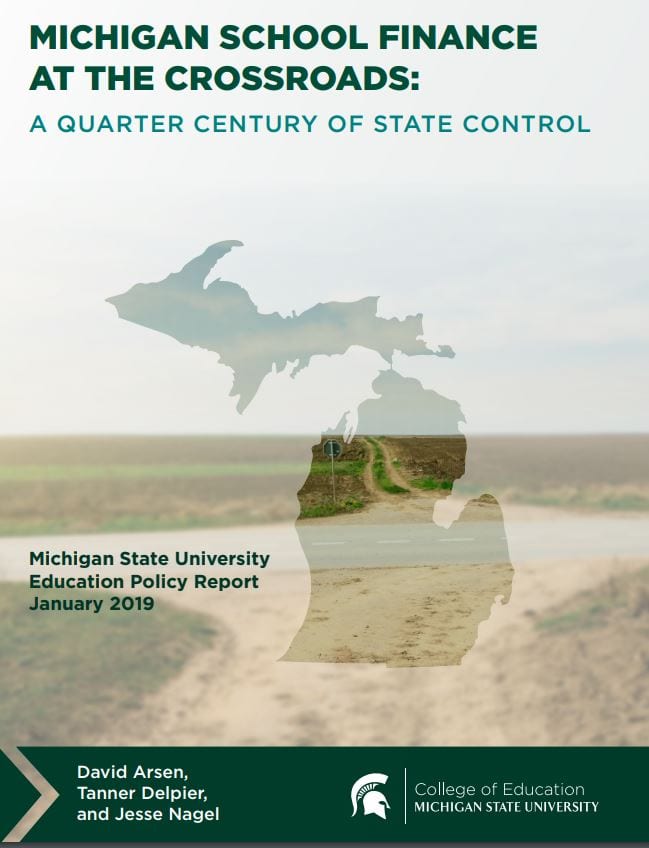
Published January 2019
91 Page Document.
Executive Summary
Michigan’s current school-funding system was established a quarter century ago with the passage of a major reform commonly known as Proposal A. The new system accomplished what it set out to do—it lowered property taxes and narrowed, but did not eliminate, revenue inequalities across districts. Proposal A also sharply restricted the ability of Michigan citizens to determine the level of funding for their local public schools. Although the state controls most operating revenue available to Michigan’s public schools, it has never calibrated funding levels to the resources needed for students to meet outcome standards, even as the federal No Child Left Behind act and the Michigan Merit Curriculum dramatically increased achievement expectations.
Michigan’s public school system is at a crossroads. It is not performing well. In contrast to 1993, Michigan’s tax rates and student performance now fall well below the national average. These unsatisfactory educational outcomes now constitute the primary catalyst for changes in funding policy.
With this report, we hope to inform a necessary public discussion of Michigan school funding and how it can be improved. We explain the principles of equity and adequacy in school finance. We provide an accessible primer on how Michigan’s K-12 public schools are currently funded. We then turn to analyze in greater detail how the Proposal A system has performed. We identify several key problems, and conclude by offering policy recommendations to address them. After a quarter century, there are evident strains in Michigan’s school finance system that should be addressed at the state level.
Over the last 15 years the adequacy of Michigan’s school funding has seriously eroded.
• After adjusting for inflation, total K-12 education funding declined by 30 percent between 2002 and 2015. Seventy-four percent of this decline was due to declining
state support for schools. Per-pupil revenue declined by 22 percent during this same period.
• Foundation allowance revenue is a vital component of total revenue, providing most discretionary funding for public schools. Per-pupil foundation allowances are set by
the state and vary across local districts and charter schools. Michigan’s high-revenue districts have experienced a nearly uninterrupted drop in their foundation grants’
inflation-adjusted value over the entire Proposal A period, declining by nearly 40 percent. Most districts’ real foundation allowances increased in the early years under
Proposal A. Since 2003, however, Michigan’s basic foundation allowance has fallen by 18.5 percent, while the minimum foundation declined by 25.6 percent.
• Proposal A devoted little attention to addressing the added costs of educating students with added needs. While the number of at-risk students has increased
significantly, inflation-adjusted at-risk funding per at-risk student has plunged by over 60 percent since 2001. • Michigan ranks dead last among states in total education revenue growth since the passage of Proposal A. After adjusting for inflation, Michigan’s education revenue in 2015 was only 82 percent of the state’s 1995 revenue. No other state is close to a Michigan School Finance at the Crossroads 2 decline of this magnitude. In 48 states, 2015 education revenue was higher, often
much higher, than in 1995. Michigan’s real per-pupil revenues declined by 15 percent over this same period, ranking 48th among the 50 states.
